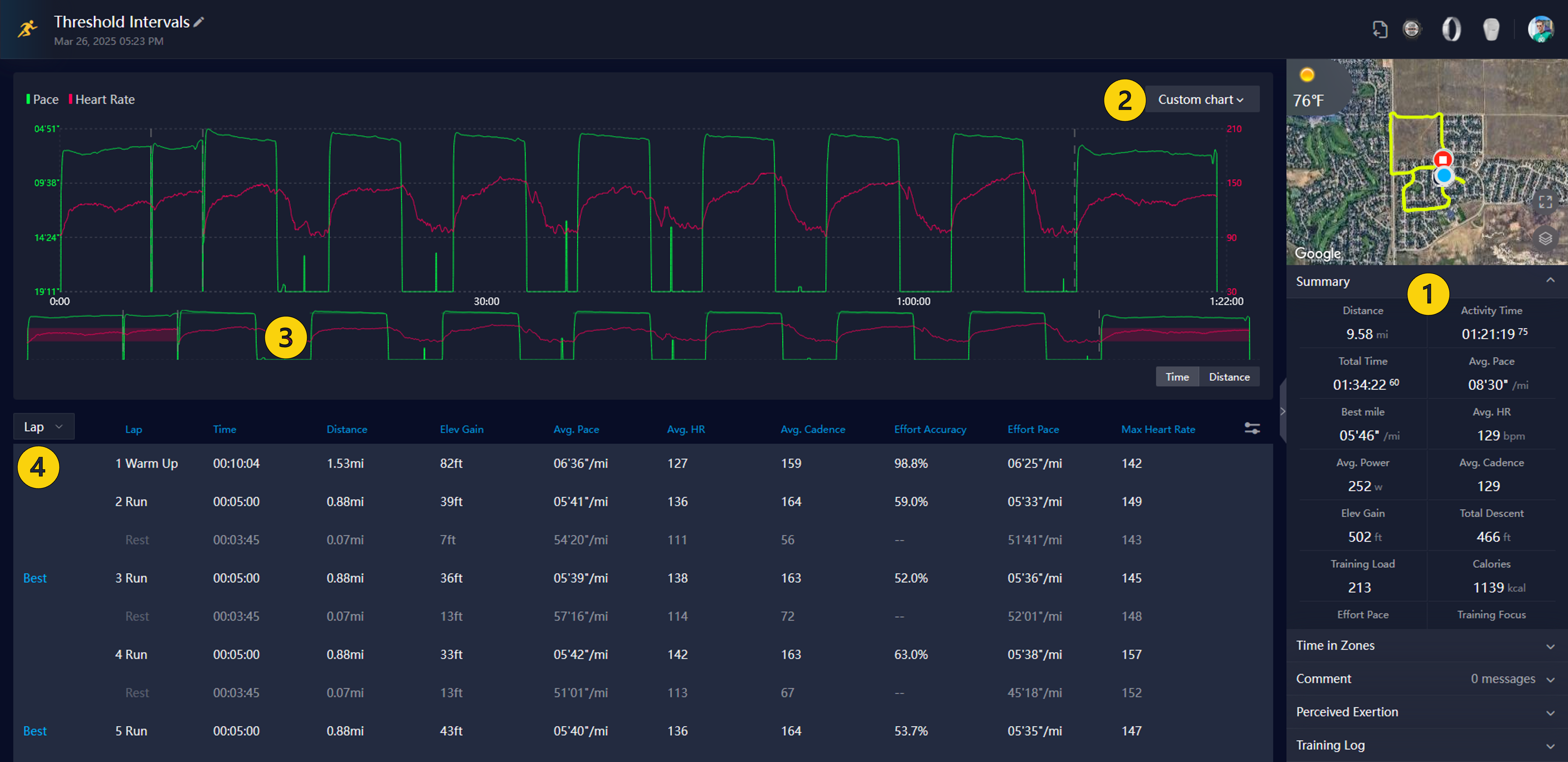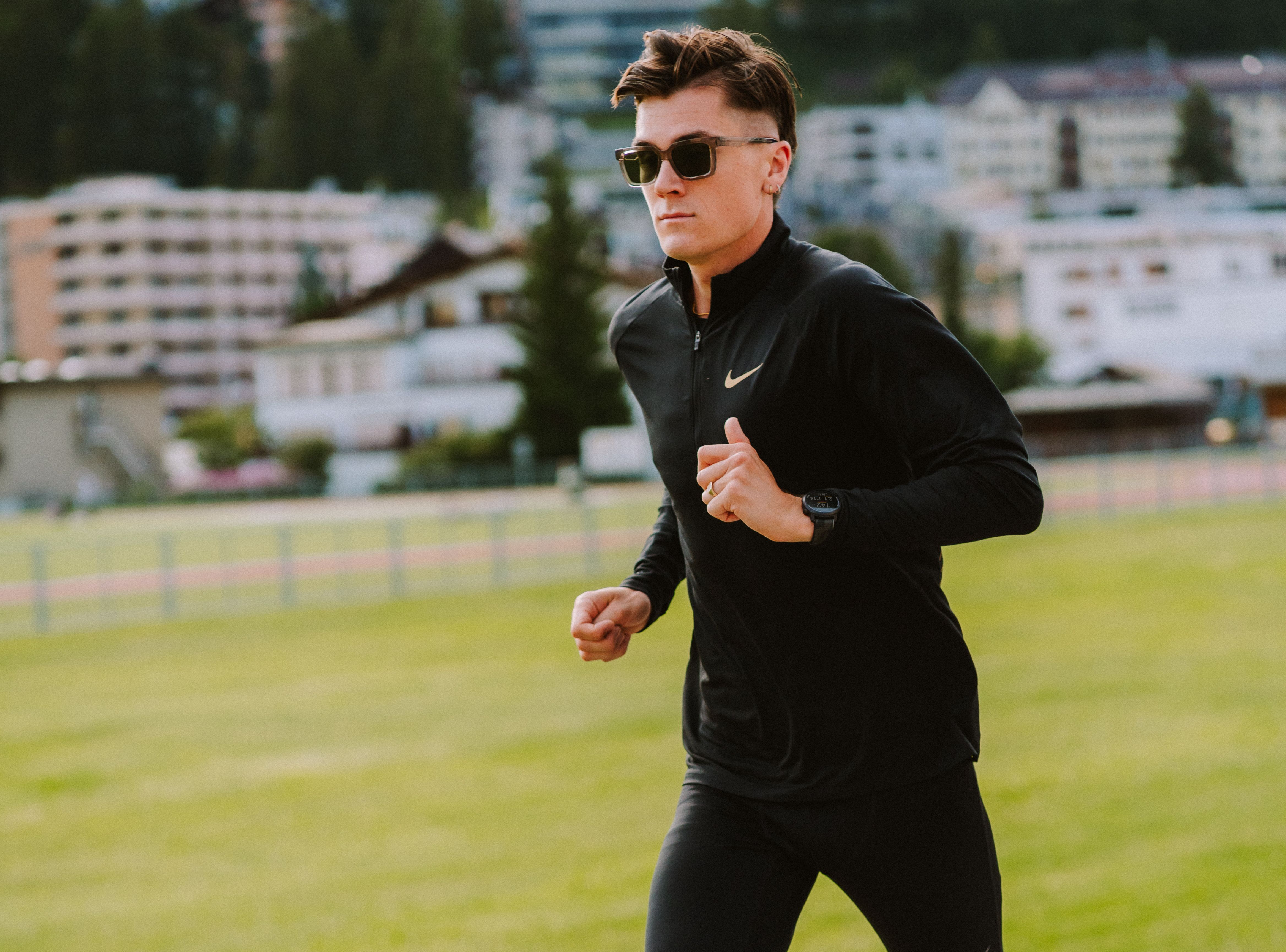Why Data Analysis Matters
Today’s training tools give us more data than ever. But data is only helpful if we know how to use it. For coaches and athletes, understanding what the numbers mean is key to improving performance.
The COROS Training Hub shows how an athlete is training, recovering, and progressing. But to make good use of it, you need to ask the right questions first:
- Are your training zones accurate?
- Are you looking at data in the right context?
- Are you distinguishing between trends that are simply correlated and those that truly drive performance?
In this article, we’ll walk through the basics of using your training data to make smarter decisions.
Start with Accurate Data: Set Your Zones
Before you start analyzing workouts, make sure your training zones are correct. These zones shape how your data is interpreted—if they’re off, your conclusions might be too.
COROS EvoLab automatically updates your zones based on recent training data. However, updates only happen when there’s enough reliable information. If EvoLab hasn't adjusted your zones in a while, it’s likely because there isn’t sufficient data to make an accurate change. Longer threshold runs and races usually provide the best input for EvoLab to work from.
If you’re unsure whether your zones are accurate, the best option is to perform a Running Fitness Test right from your watch. This test is similar to a progressive tempo, so be sure to perform it far from any races on your calendar. You can also manually adjust zones if you have results from external lab tests, time trials, or other reliable benchmarks.
Tips for maintaining accurate zones:
- Use threshold-level efforts (e.g., longer intervals, race efforts) to keep EvoLab’s data fresh.
- Schedule a Running Fitness Test periodically, especially after major fitness gains.
- Update zones manually if external testing data becomes available.
Accurate zones are the first step to making sure your workout data leads to the right coaching decisions.
Anatomy of Your Activity Data

To find trends, you need to know where to look. In the COROS Training Hub, each activity has layers of data you can explore:
1. Top Summary Metrics: Key information like Distance, Duration, Pace, Elevation Gain, Training Load, and more.
2. Custom Charts: Interactive graphs showing Pace, Heart Rate, Cadence, Elevation, and more, which you can layer together.
3. Chart Sections: Click and drag to zoom in on specific sections of the graph and spot where trends appear.
4. Laps and Splits: Break down each metric by intervals or distance markers to compare between repetitions.
These tools allow you to visualize performance and highlight key relationships between variables.
Correlation vs. Causation: The Foundation of Data-Based Decision Making
When analyzing athlete data, the most important questions to ask are:
“Why am I seeing this trend? What caused it? Should I adjust training based on this information?”
- Correlation happens when two variables move together. For example, faster paces might correlate with wearing a new pair of shoes—but that doesn't mean the shoes caused the improvement.
- Causation means one variable directly influences another. True causation is harder to prove and usually requires deeper investigation.
Takeaway: Never assume causation just because two things happen together. Always look for context clues before making training changes.
Identifying Trends That Matter
Finding valuable insights often starts by isolating two key variables and analyzing their relationship. Keep it simple before adding more layers.
Key comparisons to start with:
- Pace vs. Heart Rate (Aerobic Efficiency): Track how Heart Rate responds to a given Pace. Is the athlete maintaining lower HR at the same paces over time? That’s a sign of aerobic improvement.
- Pace vs. Cadence (Mechanical Efficiency): Check how cadence trends differ between easy runs and harder efforts. Also, watch for changes over distance—does cadence drop after 60 minutes? If so, it could indicate mechanical fatigue or a need for longer runs.
- Pace vs. Elevation (Terrain Impact): Evaluate how much Pace slows on climbs. Adding a third variable like Power can tell a richer story about effort levels, especially for cross-country and trail athletes. Pro Tip: After a training camp at altitude, track changes in Heart Rate, Resting Heart Rate, and HRV to measure adaptation.
Recognizing Relationships in Data
Once you identify a trend, determine what type of relationship it is:
- Divergent Line (Negative Relationship): When Heart Rate rises while Pace drops, efficiency is compromised. Common in early-season races, high-heat conditions, or overreaching.

- Flat Lines + Matching Moves (Positive Relationship): When Heart Rate and Pace move together, it shows good aerobic efficiency—if that’s the goal of the workout. Compare it to the intent of the session.

Always match what you see in the data to the context of the workout and the athlete’s training phase.
Applying Data to Coaching Decisions
Understanding correlations, causations, and trends allows coaches to move beyond assumptions.
Instead of thinking, "My athlete’s heart rate was high today," ask deeper questions:
- Were they dehydrated?
- Were they mentally fatigued?
- Did they start too fast?
- Was it hotter or hillier than usual?
Answering questions like these helps you apply the data to make a decision. If the athlete's heart rate was high and they were dehydrated, you might tell them to drink more water rather than adjust their future training paces.
Conclusion: Making Data Work for You
Even the best data is only as valuable as the interpretation behind it. The most impactful insights don’t come from collecting more numbers—they come from asking better questions.
By identifying trends, distinguishing correlation from causation, and understanding the broader context, coaches can uncover the real drivers of athlete performance. Data provides the clues. It’s up to the coach to connect the dots and turn those clues into smarter, more effective strategies.
This article was developed in collaboration with Andrew Simmons, Head Coach at Peak Performance Running. Andrew offers remote coaching and consultation for athletes of all levels, blending individualized training with data-driven insights. To learn more or to get in touch, visit peakperformrun.com. You can also read more of his writing and coaching insights at coachsimmonsruns.substack.com.
/filters:quality(90)/fit-in/24x24/coros-v2/images/4fbd8cc7f8e10727238ed4fd78204aed.png)

/filters:quality(90)/fit-in/970x750/coros-web-faq/upload/images/2109172f0df686efc3897a09f8fbe411.png)





